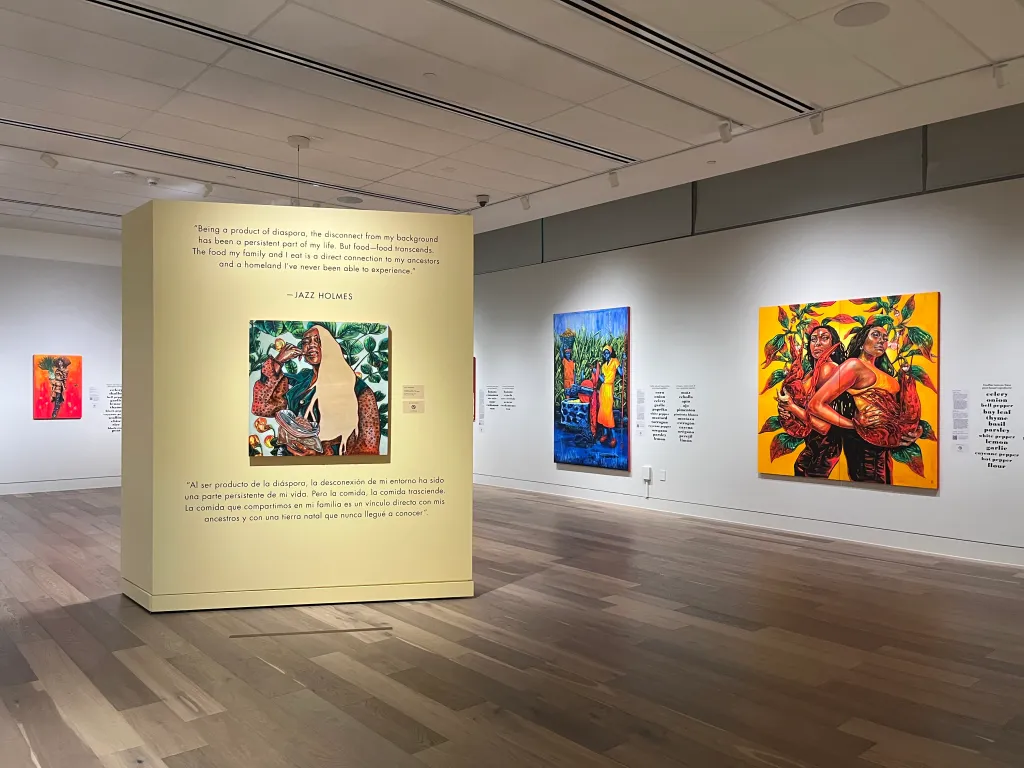Copyright The Denver Post

We don’t think of art galleries and museums as seasonal places. With their walls painted white and their windows covered, it is difficult to discern the time of day, or even the time of year, once you are inside. It’s a curator’s way of controlling the environment, along with every second of the viewer experience. But it is different at the Denver Botanic Gardens. Its three sizable galleries sit inside one of the biggest urban open spaces in the city, where beds of flowering flora and exotic trees are the main attraction. Their buds and leaves come and go like clockwork, and the groove of winter, spring, summer and fall set a relentless and inescapable pace. And so that rhythm takes hold to some degree in the indoor exhibition spaces. The current shows don’t say it out loud, but they have the distinct feeling of fall. That is especially true with “Xochimilco: Works by Eduardo Robledo Romero” in the garden’s main gallery, whose imagery includes flowers, altars and skeletons that come to life and evoke the spirit of Halloween and, more so, the Day of the Dead, two of the most celebrated autumn holidays on the continent. The works are technical marvels, hyper-detailed linocut prints, for which Romero has carved into linoleum many thousands of fine lines that come together into fantastical scenes. The works are unfathomably labor-intensive and created with amazing precision. The prints themselves, on soft, cushiony white paper, are cleanly executed. These are works a viewer stares at for some time, trying to make sense of Romero’s imaginative mind. He was born and raised in Xochimilco, a section of southern Mexico City known — at least in folkloric terms — as a place where pre-colonial spiritual practices mingle with the Christianity imported by Spanish conquistadors centuries ago. The scenes are a wild mix of imagery. In one piece, titled “La suerte” (in English, “Destiny”), a carousel made from an armadillo’s body carries a circling array of fish, deer, rabbits and coyotes. Nothing is as it seems. One creature has the head of a man and the tail feathers of a turkey. Another is cat-like, though its body is made from corn. In the print “Cazadores de sueños” (“Dream Catchers”), a quintet of skeletons is on a hunting mission, using butterfly nets to capture such beings as a flying armadillo playing the saxophone and an octopus with a head that resembles a hot air balloon. Romero indulges his mingling of sacred rituals, old and new, to extremes. “Mujer serpiente” (Serpent Woman) is a remix of deities from the ages. Gods and spiritual characters rooted in Indigenous practices swirl around a Madonna-like figure wearing a crucifix necklace. In a sense, the scene is timeless, though it also manages to tell a detailed story about 500 hundred years of North American history. The pieces are mesmerizing, playful, weird, slightly haunting and a practical way to mark whichever kind of fall holiday you like to celebrate. The other exhibition with a nice seasonal feeling is “Nourished,” with multi-media works by Jazz Holmes. The pieces are all food-related, with a feeling of being caught up in a bountiful fall harvest. Holmes’ oil paintings, integrated with beads, fabric, rhinestones and other embellishments, depict people — all women in this particular display — and food in equal measure. They are portraits of humans and the things they eat, reflecting the traditions of her own Louisiana Creole family roots. Her background also includes, as the exhibition text points out, influences of Afro-Panamanian, Gullah and Caribbean cultures. The people in Holmes’ paintings are inseparable from the things they carry with them: lobsters, grapes, chickens and more. In one painting, “Tchoupitoulas,” a female subject’s hair is nearly indiscernible from the deep green cabbage leaves that surround her head like a halo. This blurring of the line between humans and the things they consume is meant to show that “food is more than just a basic need — it’s intertwined with community, family relationships and heritage,” as the text explains. Holmes’ exaggerated style extends to her color palettes and the patterns she puts on canvas. The paintings overflow with deep reds, blues and greens, often in the same scene. They are vibrant, energetic, spiritual, female-centered and full of compelling narratives. The show has a nice twist. The paintings are accompanied by QR codes that link to the artist’s own recipes for the dishes her subjects are in the process of preparing. There is one for Hoppin’ John, made with rice, black-eyed peas and pork. Another shows how to prepare etouffée, with celery, onion, peppers, garlic and other ingredients. That’s a very contemporary move that brings this show to another level. It makes the paintings personal, and offers visitors a chance to take the look, essence and good taste of this exhibition home with them. They also add to the seasonal feel of the Gardens’ fall shows. They are warm comfort foods, spicy stews just right for a chilly autumn night. IF YOU GO Both shows continue through March 22 at the Denver Botanic Gardens’ York Street headquarters. Info at 720-865-3500 or botanicgardens.org. Ray Mark Rinaldi is a Denver-based freelance writer who specializes in fine arts.



